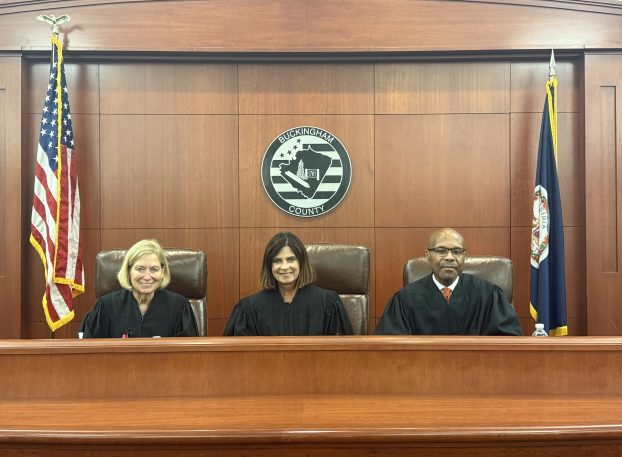Myths that make monsters — Part II
Published 7:36 am Thursday, June 1, 2017
In a previous column, I started a discussion of myths that students often have about how language really works. These myths that students (and society at large) believe about language are significant because they can take people to a socially harmful place — they can justify the assigning of an unjustified negative social value not only to language varieties but to the very speakers of those language varieties.
These myths affect how we view other people if they speak differently than we do. The first myth I identified is that students think that language exists in only one variety. This leads us to the second wrong idea that students are likely to absorb about language. Although every dialect of spoken English is a rule-governed system with a consistent, internal grammar, students are led to believe that only the standard variety has a grammar and that the other varieties lack grammar or structure, have corrupted or inferior forms and for these reasons are linguistically inferior. This is simply not true. All dialectal varieties of a language have an internal, consistent, grammatical structure. It is important to point out that the internal grammars of these dialects are often variant from standard English but they are not gibberish, nor are they corrupted linguistically, nor are they linguistically inferior.
The more linguists analyze and study language varieties, the more evidence there is that all dialects and varieties are internally consistent and governed by a set of rules. One linguist has suggested that if a dialect were to have no rules (i.e. be gibberish), there would be no wrong way to say something in that dialect.
And here is where the serious breakdown occurs in understanding how language works. This is where it broke down in the hostile classroom I described in the previous column. The students in the class that day heard me say, “Black English has a consistently internal grammar,” and they made an enormous leap in their thinking and responded with, “Don’t tell me I’m going to speak that way.” “Don’t tell me I’ve got to learn that,” and one student told me, “Don’t try to tell me I’ve got to teach that to my kids when I have them.”
In my presentation, I never suggested that they learn another dialect — although it certainly wouldn’t hurt them linguistically to be bi-dialectal or bilingual. I simply proved to them linguistically that a particular dialect of English that they considered substandard and inferior was neither. And when they saw the proof linguistically, they jumped to the conclusion that they would be forced to learn and speak this variety. There was no room in their perception of language for two dialects to be linguistically equal and for the world to be okay. Their perception was that one variety (the standard) is superior and all others are inferior.
It is true that socially the values placed on the non-standard varieties of language are indeed negative. But it is imperative to point out that these value judgements are social not linguistic. And the harm caused by these negative value judgements is great because the value judgment is often extended from the non-standard dialect to the speakers themselves, who are also perceived as inferior. Think about it. If you think someone speaks an inferior form of language, then it’s easy to categorize them as inferior as well. And this happens every day in our culture and it has created an incredible amount of social harm and has “justified” racist attitudes.
In the classroom, studies and discussions about language focus on the grammar and uses of the standard language, so it’s easy to see how students begin to believe that the standard is superior linguistically. It’s the only variety that they learn about.
If the standard variety of language is linguistically superior, then it is assumed that non-standard varieties are linguistically inferior. Unfortunately, the value judgment often extends to the speakers of non-standard dialects and they are assigned a negative social value because of the way they speak. One of the saddest things about this is that many times speakers of non-standard dialects of English have never been given access to standard English grammar and vocabulary. Because standard English grammar can be lexically and syntactically variant from the native dialect, students of non-standard varieties of English must be taught the new variety, and it helps to do so in much the same way one would teach a foreign language in terms of grammar especially. If teachers can do this without disparaging or demeaning their native dialect, then so much better. It is important to give all students instruction and training in standard language, without teaching them to despise their dialect, because the way any society works is that one language variety becomes the chosen way to speak and write professionally. The trick is to teach this without the negative social judgments attached to the non-standard varieties.
This leads to the third pedagogical misfortune or myth that can be harmful. When students study English they are often taught to use the terms “good” and “bad” in reference to language. Students hear teachers and parents talk about the importance of speaking “good English” and how if they speak “bad English” they won’t get a job. Or “good English” is associated with one group of people and “bad English” is associated with another group. But it is not as simple as “good” and “bad.”
Sometimes these terms refer to social register or the social appropriateness of the speech in question. For instance, in a formal situation it would be inappropriate to greet people one does not know by saying “Wassup?” There are, however, other social situations where this is an appropriate and expected speech utterance.
Other times “bad English” signifies nonstandard dialectal or regional English. This is especially harmful when “bad” is applied to a dialect or speech of a group of people. Essentially students pick up the idea that English doesn’t “belong” to these groups of speakers because they do not use it correctly. This myth doesn’t allow these groups to be included in “English.” Social context, regions and social register must all be taken into account when we are talking about language use. Teachers must be careful when describing language as “good” or “bad.” These terms may cause great harm because of their unavoidably strong moral connotations which form part of the assessment and labeling. At the end of the day, good language is language that communicates. Bad language is language that does not communicate. However, because it is important for students to learn standard language, it is far less dangerous and much more accurate to use the terms standard and non-standard English. These labels are more neutral and keep students from judging or being judged by inappropriately applied moral standards.
To be continued in Part III.
Julia Palmer is an associate professor of modern languages at Hampden-Sydney College. Her email address is jpalmer@hsc.edu.





